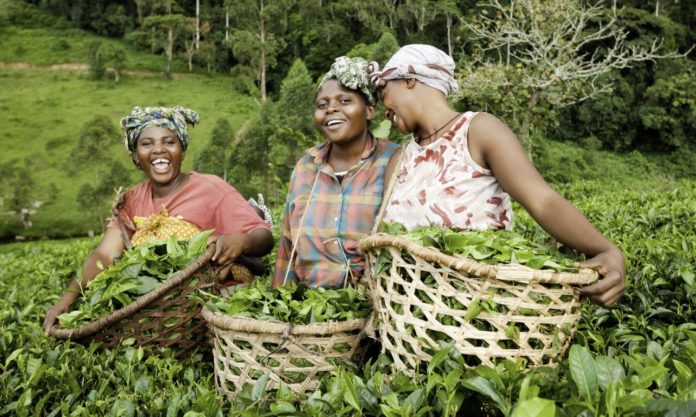There are 13 million people propping up the global tea industry. Two thirds of those people are smallholder farmers in developing countries, many of whom live in poverty.
New research from the International Institute for Sustainable Development (IISD) unearths the latest consumption and production trends in the sector and explores why so many tea farmers are struggling to make a living.
“Smallholder farmers bear the biggest brunt of low auction prices and volatility in the tea sector,” says Steffany Bermúdez, Policy Advisor, IISD. “They receive meagre prices for their green leaves—prices that represent a minimal share of the price tea fetches after it has been blended and packaged—and the added unpredictability of auction prices exposes them to even greater financial uncertainty.”
International tea trade is unique in that three quarters of the world’s tea is traded through public auctions. Overall, tea auction prices have been declining for the past 4 decades, with more severe drops in recent years due to pandemic-related disruptions and the Russia–Ukraine conflict.
On top of this, farmers also bear all the risks of extreme weather changes—to which the tea crop is very vulnerable—as well as variations in the cost and availability of crucial inputs like fertilizers. In some tea-producing countries, smallholder farmers make no profit at all, as their total production costs often exceed their earnings. There is little they can do to argue their case since farmers have no influence over tea auction prices and have limited market knowledge, so they must pay brokers a great deal to sell their tea.
IISD’s new report examines whether voluntary sustainability standards (VSSs) such as Rainforest Alliance, Organic, and Fairtrade International make a difference to smallholder farmers’ livelihoods.
At least a quarter of tea is produced in compliance with one of these initiatives. Farmers in some major producing countries can receive up to 23% higher prices than conventional producers when selling VSS-compliant tea. However, further evidence of VSSs’ impact on farmers’ incomes is limited. Results are context and location specific, and it is not clear if the prices they fetch even make up for the costs of certification. They certainly don’t if VSS-compliant tea is sold as conventional, which estimates suggest happens 90% of the time.
“Global demand for VSS-compliant tea climbed after the pandemic and is expected to keep on growing— with room to grow even faster,” says Vivek Voora, Senior Associate, IISD. “Challenges need to be overcome, particularly in producing countries, to make VSS-compliant tea more readily available—and more affordable.”
IISD experts also argue that there is an urgent need to develop new approaches to recognizing the social and environmental costs of conventional tea production so that farmers can be adequately rewarded for using more sustainable practices.
This is particularly challenging given that tea auctions are heavily influenced by multinational companies downstream in the value chain that hold all the power and most of the profit in the sector yet are rarely concerned with the social and environmental impacts of conventional tea production. As a minimum, they should be paying prices that cover farmers’ production costs and basic household needs.
The report provides recommendations for how governments, private sector actors, and standard-setting bodies can better support smallholder farmers and make tea production fairer and more sustainable. These recommendations range from modernizing tea auctions to place greater value on VSS-compliant tea to encouraging all standard-setting bodies to establish minimum prices and premiums—as well as strengthening those that already do.









